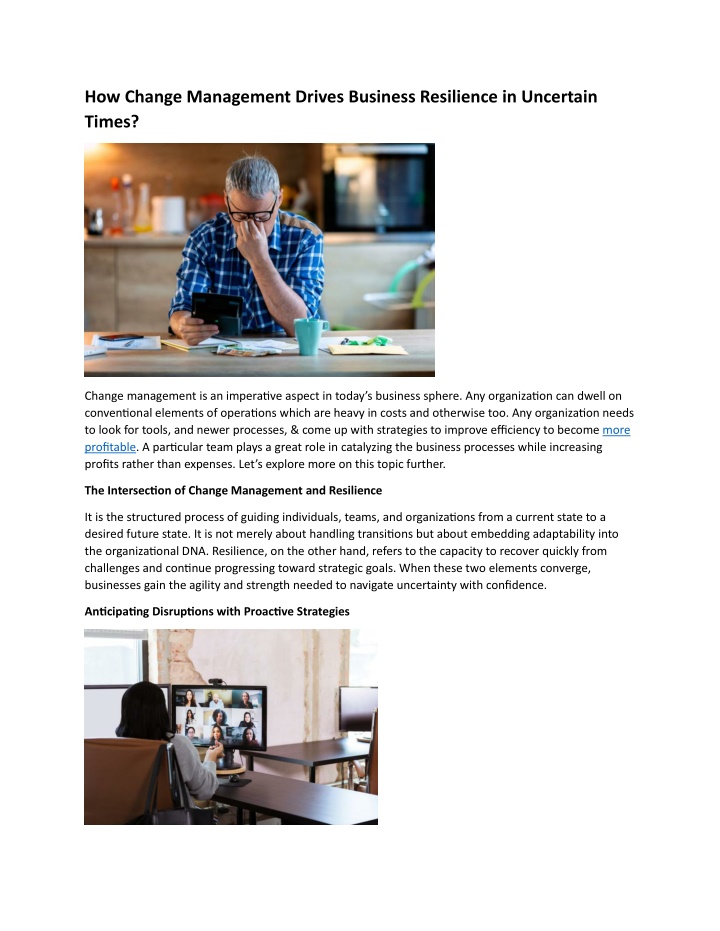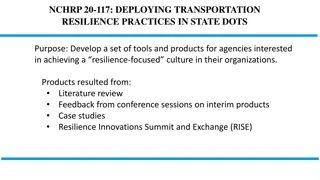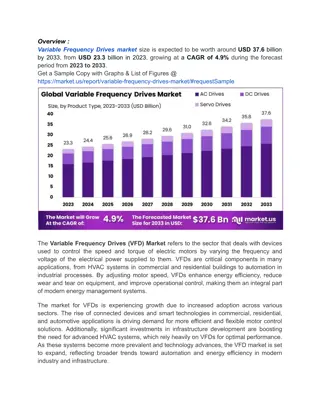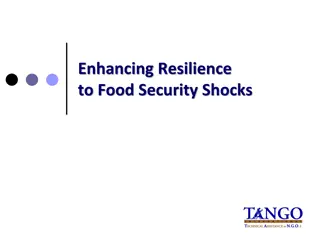
How Change Management Drives Business Resilience in Uncertain Times
Discover how effective change management drives business resilience in uncertain times. Learn strategies to enhance adaptability, empower employees, leverage technology, and build a culture of continuous improvement for long-term success.
Download Presentation

Please find below an Image/Link to download the presentation.
The content on the website is provided AS IS for your information and personal use only. It may not be sold, licensed, or shared on other websites without obtaining consent from the author. If you encounter any issues during the download, it is possible that the publisher has removed the file from their server.
You are allowed to download the files provided on this website for personal or commercial use, subject to the condition that they are used lawfully. All files are the property of their respective owners.
The content on the website is provided AS IS for your information and personal use only. It may not be sold, licensed, or shared on other websites without obtaining consent from the author.
E N D
Presentation Transcript
How Change Management Drives Business Resilience in Uncertain Times? Change management is an imperative aspect in today s business sphere. Any organization can dwell on conventional elements of operations which are heavy in costs and otherwise too. Any organization needs to look for tools, and newer processes, & come up with strategies to improve efficiency to becomemore profitable. A particular team plays a great role in catalyzing the business processes while increasing profits rather than expenses. Let s explore more on this topic further. The Intersection of Change Management and Resilience It is the structured process of guiding individuals, teams, and organizations from a current state to a desired future state. It is not merely about handling transitions but about embedding adaptability into the organizational DNA. Resilience, on the other hand, refers to the capacity to recover quickly from challenges and continue progressing toward strategic goals. When these two elements converge, businesses gain the agility and strength needed to navigate uncertainty with confidence. Anticipating Disruptions with Proactive Strategies
One of the key roles of change management in driving resilience is the ability to anticipate potential disruptions. Whether it s an economic downturn, technological advancements, or shifts in consumer behavior, it enables organizations to plan for various scenarios. By fostering a culture of preparedness, companies can mitigate risks and ensure continuity. For example, during theCOVID-19pandemic, businesses with robust management frameworks swiftly transitioned to remote work models, maintained operational efficiency, and even identified new growth opportunities. Their ability to pivot stemmed from having proactive strategies in place. Empowering People Amidst Change At its core, it is about people. Employees often face uncertainty and resistance when confronted with change, which can hinder organizational progress. Effective management addresses these challenges by emphasizing communication, training, and engagement. When employees feel supported and understand the purpose behind change initiatives, they are more likely to embrace new processes and technologies. This empowerment is a cornerstone of business resilience, as it creates a workforce that is adaptable and committed to the organization s vision. Enhancing Agility Resilient businesses are those that continuously learn and evolve. Change management fosters a mindset of continuous improvement by encouraging feedback loops, iterative processes, andknowledge sharing. This approach not only ensures the successful implementation of change initiatives but also equips organizations to respond effectively to future challenges. For instance, companies in the tech sector frequently adopt agile methodologies that align with management principles. These methodologies allow for rapid experimentation, learning from failures, and scaling successful solutions all essential components of resilience. Leveraging Technology for Resilient Transformation The digital era has introduced unprecedented complexities and opportunities. Change management plays a pivotal role in helping organizations leverage technology to build resilience. From implementing
cloud-based solutions to adopting artificial intelligence, effective management ensures that technological transitions are seamless and value-driven. A case in point is the retail industry s shift to e-commerce. Retailers that integrated digital platforms through structured management were better positioned to meet consumer demands and maintain competitive advantages during the pandemic. Building Psychological Safety in the Workplace A frequently overlooked aspect of resilience is the mental well-being of employees. This management frameworks that prioritize psychological safety create environments where employees feel valued and supported. When employees believe they can express concerns or innovate without fear of retribution, they are more likely to engage fully and contribute to organizational success. Building psychological safety involves transparent communication, empathy from leadership, and providing tools for stress management during periods of transition. Organizations that integrate mental health initiatives into their change management strategies often emerge stronger from disruptions. Measuring and Sustaining Resilience A critical aspect of change management is the ability to measure the success of change initiatives and their impact on resilience. Key performance indicators (KPIs) such as employee engagement, process efficiency, and customer satisfaction provide insights into how well an organization adapts to change. Moreover, sustaining resilience requires continuous monitoring and refinement of strategies. The management frameworks emphasize the importance of reviewing outcomes and making data-driven adjustments to ensure long-term stability. Overcoming Common Challenges While change management is essential for resilience, it is not without challenges. Common barriers include resistance to change, lack of leadership alignment, and insufficient resources. Addressing these issues requires a comprehensive approach that integrates clear communication, strong leadership, and stakeholder involvement. For example, during mergers and acquisitions, organizations often face cultural clashes that can derail integration efforts. A well-executed strategy helps align diverse teams, creating a unified vision and fostering resilience. The Role of Leadership in Driving Resilient Change Leadership plays a pivotal role in the success of change management initiatives. Resilient leaders inspire confidence, demonstrate empathy, and provide clarity during times of uncertainty. By championing change and setting a positive example, leaders can galvanize teams and drive organizational transformation.
Investing in Technology and Workforce Development Beyond leadership, successful change management requires investments in both technology and workforce development. Organizations must equip their teams with the skills and tools necessary to navigate complex transitions. This dual focus ensures that both human and technological resources are optimized for maximum impact. For example, training programs tailored to new systems or processes reduce the learning curve for employees, while advanced analytics tools can help leaders identify and address potential issues before they escalate. Conclusion: In an era marked by constant disruption, the importance of change management cannot be overstated. It serves as the foundation for building business resilience, enabling organizations to navigate uncertainty, seize opportunities, and thrive. For C-suite executives, startup entrepreneurs, and managers, investing in the management is not just a strategic decision it is an imperative for staying competitive in an ever-evolving marketplace. As industries continue to face new challenges, those who prioritize change management will lead the charge in defining the future of resilient, adaptive businesses. By fostering a culture of adaptability, leveraging technology, and empowering employees, organizations can turn uncertainty into opportunity and secure their place in the markets of tomorrow. Uncover the latest trends and insights with our articles onVisionary Vogues






















